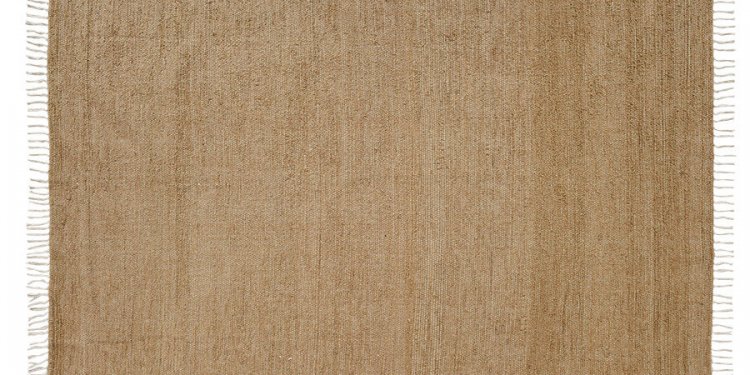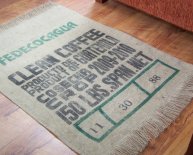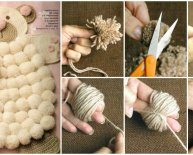
Burlap rug DIY
On a frosty early morning, once you begin to swing your dreading-to-touch-the-cold-floor foot from your snug sleep, wouldn't it be great to understand there's a cuddly hooked carpet awaiting all of them? That floor can warm up you around, also, if it's an "heirloom" that you made your self!
And you can develop a comfortable treat for your toes, because hooked rugs need neither unique needle-working ability nor a big spending plan. If you a rug-sized scrap of burlap to utilize as backing, some assorted items of old wool clothes to recycle, a dollar or two to pay on the one required device, and some stay-at-home hours to free, you can easily quickly be a homestead carpet hooker.
Additionally, if you become excellent as of this art, you need to use it to make a profit. There is quite a need for fine handmade floor coverings, the thing is that, plus the costs on high quality hooked rugs can run from $100 to $1, 000.
Getting Hooking
There're about as numerous processes for hooking a carpet as you will find materials accessible to get it done with. To narrow the field, a novice might-be wisest to understand hand-hooking first, using salvaged or cheap burlap and wool pieces. This is by far the simplest and least pricey technique.
To begin with, get a hand hook (it'll price around $1.25) from a crafts offer shop. Then scout aside some good scraps of wool fabric (youwill need half a pound per sq ft of one's rug), either in yours closets and cellar or at a thrift store or flea market. Wool is far better than just about any rugmaking product, simply because it wears very well. Also, it's quickly colored ... which means you needn't limit your color plan to your shades you will find. Should you want to dye your natural product, however, it's also important to get or scrounge as much light-colored (preferably white or beige) material as you're able to.
Design Preparation
Being create a nice carpet, you will have to work from a well-planned, interesting design. That is interesting, maybe not intricate. Therefore for the maiden effort either beg, borrow, or sketch your very own easy flowery or geometric pattern, perhaps the one that will need various hues of just one single shade. It really is all too possible for a beginner to obtain bogged down in a design, no matter how stunning, that demands lots of color and line changes. Keep your first attempt easy, after that, and work up to complex details gradually while you become more proficient at the method.
When you have identified your theme, decide on the dimensions you want your carpet having (small the better in the first place ... and remember that a square or rectangular form is likely to make for easy hemming if you are done). Then figure in a 3" border throughout for a rim which can be folded under subsequent, and cut your burlap to dimensions. Protect the border associated with the backing with sturdy masking or rug-hemming tape, to help it hold its form as you work, and make use of an indelible marker to trace the pattern you've opted for in the heart of your soon-to-be rug.
Now, place the backing apart, grab your assortment of wool, and slice the product into pieces — each about 4" x 16" — to organize it because of its "bath."
Colors Cultivation
Dyeing fabric is an independent (and somewhat time consuming) art by itself, one which requires determination and a willingness to create (and tidy up) chaos. Of course, you don't need to replace the color of the wool you have found, but then test it out for? After you have had a little bit of experience, you will certainly come up with dyeing practices of your very own that will just improve the quality of your rugs. At the same time, discover an approach to begin by switching out a few tones of one standard color.
To start, make sure to enable yourself at the very least couple of hours of home time. Next, locate whatever youwill need: the piles of wool strips you have slashed; one large (at least two-quart) porcelain pot; three to five additional pans (dependant on how many different tints you intend to create); a number of wood stirring utensils; dining table salt; white vinegar; calculating spoons and cups; and a package of dye (it may be purchased cheaply at a variety store). In addition, you will end up smart to outfit yourself in a set of rubber gloves and a long apron, one you will not mind unintentionally splattering with permanent shade!
OK, you're prepared for action! Result in the basic dyeing option (BDS) by dissolving one packet of dye in 1 1/4 quarts (5 glasses) of hot-water. Enable this solution time for you to cool when you set-out one other pans on your own kitchen stove. In every one, location a goodly number of wool strips, afin de in sufficient liquid to cover the material, and add 1 teaspoon of sodium and 1 tablespoon of vinegar. Ensure that the fabric is carefully wet before you go on to the next step.
By this time around the BDS must be adequately cooled to enable you to add it toward fabric keeping pans in following way: Why don't we rate the tones of this color you're using, from lightest to darkest, on a scale of just one to 5. to attain the palest tint — # 1 — add 2/3 teaspoon of BDS to a cooking pan; for #2 add 2 teaspoons; for No. 3 incorporate 2 tablespoons; for #4 add 4 tablespoons; and #5 add 8 tablespoons.
If the "dye is cast, " boil the cooking pan mixtures for around thirty minutes, ensuring to blend each brew regularly with a wooden utensil. This done, eliminate the refreshed pieces from the fluid (look out! they are hot!) and carefully rinse each batch in cool water. After that distribute all of them to dry on a surface — including plastic, glass, enamel, or porcelain — that won’t digest dye or change its color, or fasten all of them to a line utilizing synthetic clothespins.
Understand this Show on the Road
After your wool has dried, slice the 16"-long pieces into narrower pieces, say 1/4" to 3/8" broad. Then escape the hand hook, and spread your prepared backing right-side up ... as you'll be taking loops from underneath the area using hook to make put on top.
To really make the loops, support the device above the burlap together with your right hand (or remaining if you are a southpaw) together with wool strip within other hand underneath the basis. Now, just drive the hook down through a hole in mesh, guide the material engrossed, and pull a loop up through the backing towards level you need the nap becoming (1/4" to 3/8" is right). Then skip some mesh holes and force the hook back to the second one to pick up another cycle. With practice, you are going to shortly have the ability to make your loops similar height; if a couple of tend to be significantly bigger than the others whenever you finish your carpet, it'll do no problems for cut all of them.

















